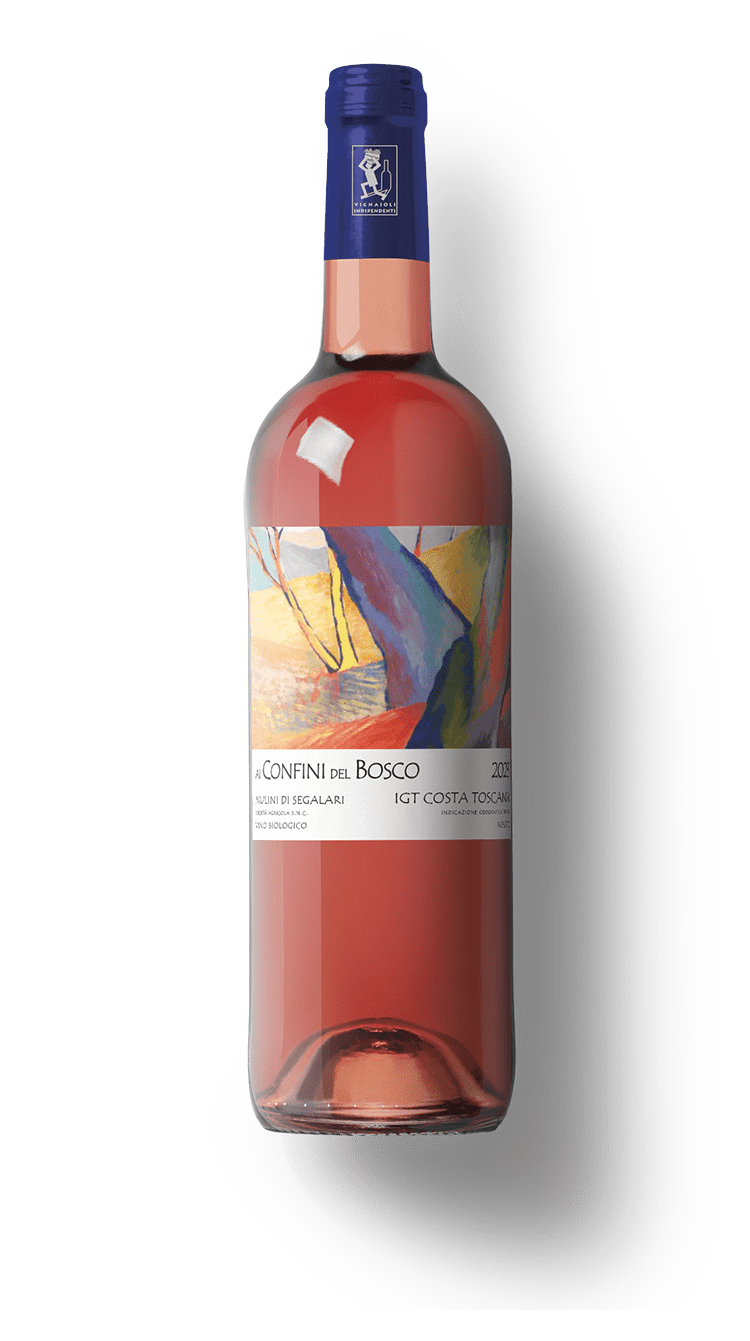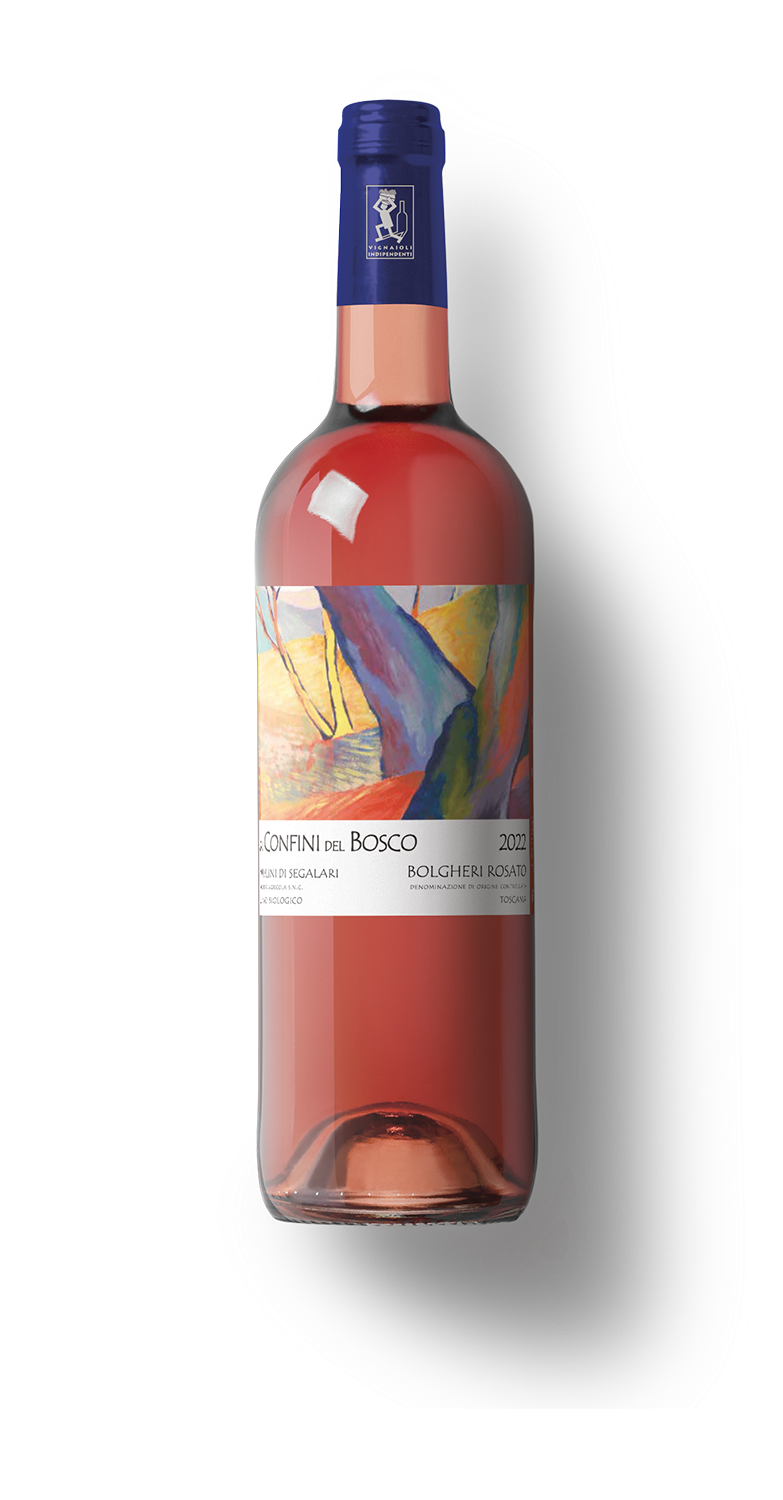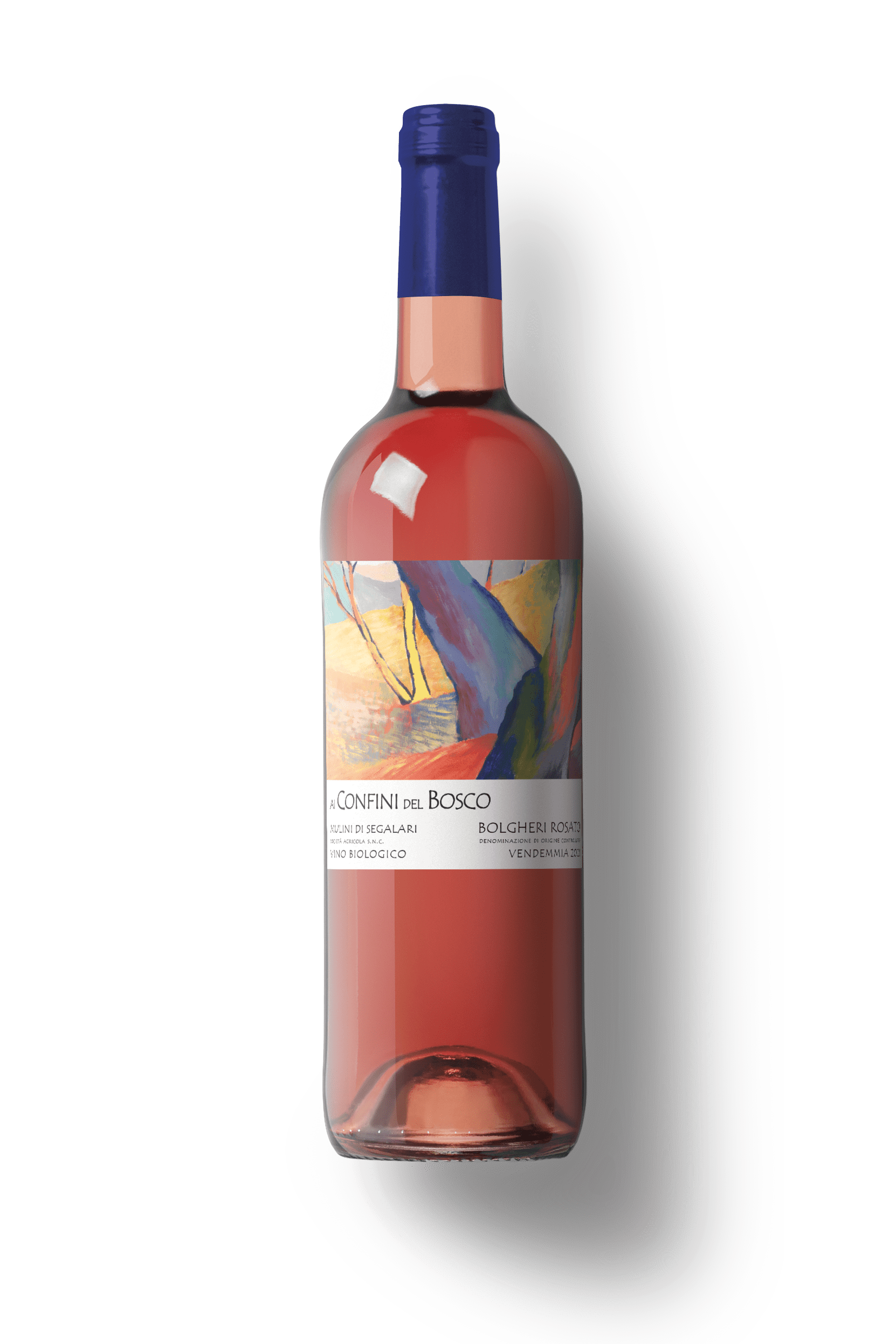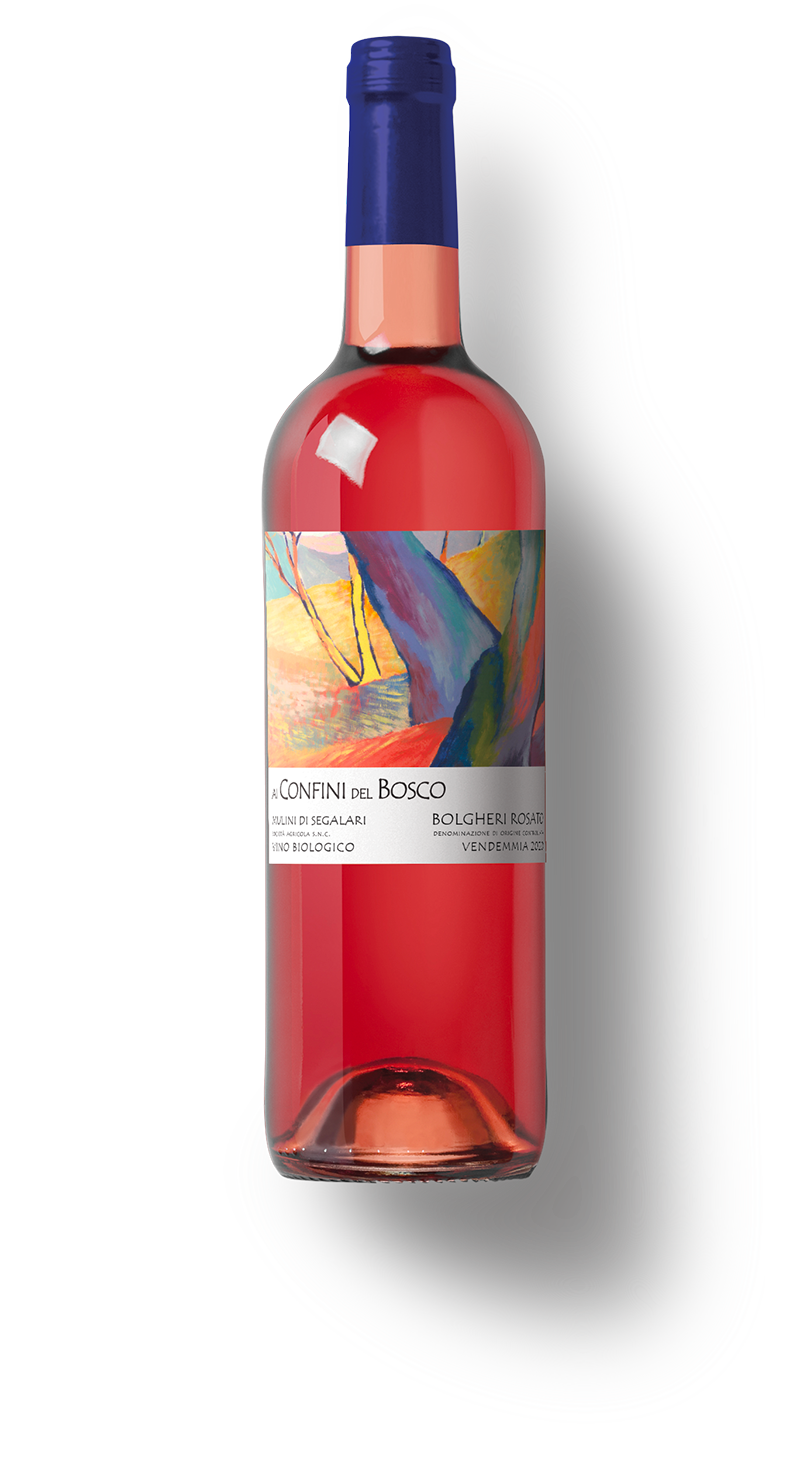2023
IGT Costa Toscana Rosato
Vineyards
Of the farm, a Castagneto Carducci, Felciaino locality 115 a
Vines
Sangiovese 60%, Syrah 20%, Petit Verdot 20%
Grounds
Remarkably heterogeneous they mainly have clayey-silty features.
Altitude
90-120 meters above sea level.
Microclimate
The vineyards are located in a large hilly area lapped by a stream, which determines a warm, cool, ventilated temperate climate, with great excursion between day and night, favoring the cultivation and development of the aromas in the wine.
Breeding
Spurred cordon, with rows that follow the natural course of the slope of the land, rides on a hill, and are oriented north-south, optimizing the lighting of the sun.
Density
Vines every 80 cm on rows at a distance of 220 cm, 5680 vines per hectare.
Agriculture
Organic and Biodynamic, with the certification of Icea, and of Demeter. The vines are cultivated in a natural way, without chemical fertilizers, without using systemic products, favoring the fertilization of the land with the practice of green manure and with symbiosis with mycorrhizae. The treatments against downy mildew are limited to the minimum doses of copper (3 kg / ha) and sulfur, allowed in Biodynamic agriculture. The biodynamic approach induces not to trim the vineyard in June and to spray it with decoctions made by us with nettle, viscose inula and equisetum, collected in the farm. The self-regulation in the production of the fruits and the complex connection with the natural resources allows to obtain high quality bunches.

Yield
The cultivation without forcing, in harmony with the rhythms and natural resources, determines a low yield per hectare. The selection of the grapes and the naturalness of the vinifications, without adding chemical additives, express and enhance the uniqueness of the Bolgheri terroir in the wine.
Harvest
The harvest, from first September to middle October, depending on the maturation of each vine, is done by hand with transport in the cellar in small boxes.
Vinification
The crushed grapes coming from the destemmed grapes, and with almost a third of whole berries, have macerated for about one night in steel fermenters only with the yeasts of the vineyard. Then the must has fermented with its yeasts for about 10 days at a low temperature. After decanting, the fine lees were kept in suspension with the batonnage every 7 days.
Maturation
The wine is aged in a steel container, followed by aging in the bottle for a few months.
Vintage 2023
After a rather mild winter, spring brought abundant rains causing a lower production of Merlot, which was absent the first year but was immediately replaced by a powerful and fruity Sangiovese. July and the first days of August were particularly hot, replaced by an initial disturbance that lowered temperatures, avoiding stress on the plants and subsequently allowing the grapes to ripen correctly. Despite the small production, the climate allowed us to reach both technical and phenolic maturity, allowing us to discover even the varieties most resistant to nature’s adversities.
Production
680 bottles
Alcohol
14,5% – SO2 totale 50 mg/litro
Download PDF
Buy online2022
DOC Bolgheri Rosato
Vineyards
Of the farm, a Castagneto Carducci, Felciaino locality 115 a
Vines
Merlot 45%, Syrah 25%, Petit Verdot 15%, Sangiovese 15%
Grounds
Remarkably heterogeneous they mainly have clayey-silty features.
Altitude
90-120 meters above sea level.
Microclimate
The vineyards are located in a large hilly area lapped by a stream, which determines a warm, cool, ventilated temperate climate, with great excursion between day and night, favoring the cultivation and development of the aromas in the wine.
Breeding
Spurred cordon, with rows that follow the natural course of the slope of the land, rides on a hill, and are oriented north-south, optimizing the lighting of the sun.
Density
Vines every 80 cm on rows at a distance of 220 cm, 5680 vines per hectare.
Agriculture
Organic and Biodynamic, with the certification of Icea, and of Demeter. The vines are cultivated in a natural way, without chemical fertilizers, without using systemic products, favoring the fertilization of the land with the practice of green manure and with symbiosis with mycorrhizae. The treatments against downy mildew are limited to the minimum doses of copper (3 kg / ha) and sulfur, allowed in Biodynamic agriculture. The biodynamic approach induces not to trim the vineyard in June and to spray it with decoctions made by us with nettle, viscose inula and equisetum, collected in the farm. The self-regulation in the production of the fruits and the complex connection with the natural resources allows to obtain high quality bunches.

Yield
The cultivation without forcing, in harmony with the rhythms and natural resources, determines a low yield per hectare. The selection of the grapes and the naturalness of the vinifications, without adding chemical additives, express and enhance the uniqueness of the Bolgheri terroir in the wine.
Harvest
The harvest, from first September to middle October, depending on the maturation of each vine, is done by hand with transport in the cellar in small boxes.
Vinification
The crushed grapes coming from the destemmed grapes, and with almost a third of whole berries, have macerated for about one night in steel fermenters only with the yeasts of the vineyard. Then the must has fermented with its yeasts for about 10 days at a low temperature. After decanting, the fine lees were kept in suspension with the batonnage every 15 days.
Maturation
The wine is aged in a steel container, followed by aging in the bottle for a few months.
Vintage 2022
The winter without rain, and a dry and hot spring have caused a decrease in the quantity of grapes but a greater intensity, acidity and aromatic component. For this reason it was a season in which phytosanitary treatments were minimal. Finally, in the second half of August, the rains arrived to give resources and vigor to the grapes before the harvest. The harvest of the Merlot grapes for the rosé began at the beginning of September, to continue with Syrah, Sangiovese and Petit Verdot.
Production
860 bottles
Alcohol
14,2% – SO2 totale 45 mg/litro
Download PDF2021
DOC Bolgheri Rosato
Vineyards
Of the farm, a Castagneto Carducci, Felciaino locality 115 a
Vines
Merlot 50%, Syrah 30%, Petit Verdot 20%
Grounds
Remarkably heterogeneous they mainly have clayey-silty features.
Altitude
90-120 meters above sea level.
Microclimate
The vineyards are located in a large hilly area lapped by a stream, which determines a warm, cool, ventilated temperate climate, with great excursion between day and night, favoring the cultivation and development of the aromas in the wine.
Breeding
Spurred cordon, with rows that follow the natural course of the slope of the land, rides on a hill, and are oriented north-south, optimizing the lighting of the sun.
Density
Vines every 80 cm on rows at a distance of 220 cm, 5680 vines per hectare.
Agriculture
Organic and Biodynamic, with the certification of Icea, and of Demeter. The vines are cultivated in a natural way, without chemical fertilizers, without using systemic products, favoring the fertilization of the land with the practice of green manure and with symbiosis with mycorrhizae. The treatments against downy mildew are limited to the minimum doses of copper (3 kg / ha) and sulfur, allowed in Biodynamic agriculture. The biodynamic approach induces not to trim the vineyard in June and to spray it with decoctions made by us with nettle, viscose inula and equisetum, collected in the farm. The self-regulation in the production of the fruits and the complex connection with the natural resources allows to obtain high quality bunches.

Yield
The cultivation without forcing, in harmony with the rhythms and natural resources, determines a low yield per hectare. The selection of the grapes and the naturalness of the vinifications, without adding chemical additives, express and enhance the uniqueness of the Bolgheri terroir in the wine.
Harvest
The harvest, from first September to middle October, depending on the maturation of each vine, is done by hand with transport in the cellar in small boxes.
Vinification
The crushed grapes coming from the destemmed grapes, and with almost a third of whole berries, have macerated for about one night in steel fermenters only with the yeasts of the vineyard. Then the must has fermented with its yeasts for about 10 days at a low temperature. After decanting, the fine lees were kept in suspension with the batonnage every 15 days.
Maturation
The wine is aged in a steel container, followed by aging in the bottle for a few months.
Vintage 2021
An abundantly rainy winter supplied the water table well, some spring frosts slightly reduced the potential of the grapes, but overall a hot and dry summer, without excess, favored the good vegetative development of the vine. Then in September, before the harvest, we had beneficial rainfall and a fall in temperatures, which favored phenolic ripening, resulting in a surprising quality of the grapes, in particular for the richness of aromas, gustatory depth, structure and concentration. The harvest of the Merlot grapes for the rosé began at the beginning of September, to continue with Syrah and Petit Verdot.
Production
930 bottles
Alcohol
13,5% – SO2 totale 70 mg/litro
Download PDF2020
DOC Bolgheri Rosato
Vineyards
Of the farm, a Castagneto Carducci, Felciaino locality 115 a
Vines
Merlot 50%, Syrah 30%, Petit Verdot 20%.
Grounds
Remarkably heterogeneous they mainly have clayey-silty features.
Altitude
90-120 meters above sea level.
Microclimate
The vineyards are located in a large hilly area lapped by a stream, which determines a warm, cool, ventilated temperate climate, with great excursion between day and night, favoring the cultivation and development of the aromas in the wine.
Breeding
Spurred cordon, with rows that follow the natural course of the slope of the land, rides on a hill, and are oriented north-south, optimizing the lighting of the sun.
Density
Vines every 80 cm on rows at a distance of 220 cm, 5680 vines per hectare.
Agriculture
Organic and Biodynamic, with the certification of Icea, and of Demeter. The vines are cultivated in a natural way, without chemical fertilizers, without using systemic products, favoring the fertilization of the land with the practice of green manure and with symbiosis with mycorrhizae. The treatments against downy mildew are limited to the minimum doses of copper (3 kg / ha) and sulfur, allowed in Biodynamic agriculture. The biodynamic approach induces not to trim the vineyard in June and to spray it with decoctions made by us with nettle, viscose inula and equisetum, collected in the farm. The self-regulation in the production of the fruits and the complex connection with the natural resources allows to obtain high quality bunches.

Yield
The cultivation without forcing, in harmony with the rhythms and natural resources, determines a low yield per hectare. The selection of the grapes and the naturalness of the vinifications, without adding chemical additives, express and enhance the uniqueness of the Bolgheri terroir in the wine.
Harvest
The harvest, from first September to middle October, depending on the maturation of each vine, is done by hand with transport in the cellar in small boxes.
Vinification
The crushed grapes coming from the destemmed grapes, and with almost a third of whole berries, have macerated for about one night in steel fermenters only with the yeasts of the vineyard. Then the must has fermented with its yeasts for about 10 days at a low temperature. After decanting, the fine lees were kept in suspension with the batonnage every 15 days.
Maturation
The wine is aged in a steel container, followed by aging in the bottle for a few months.
Vintage 2020
The winter was mild, with rare rains. In March there are still a few cold days. The temperature rose from mid-April, resulting in a regular spring, with excellent flowering and fruit set from May onwards. The rains in June greatly stimulated the vegetation of the vines, forcing hard work in the vineyard. Hot and dry summer, with many hot days above average, but cool nights, for good acidity and development of aromas in the grapes. Some rain at the end of August to reduce the water stress of the vines. In the second half of September, the hottest days reached perfect ripeness. The harvest of the Merlot grapes for the rosé began at the beginning of September, to continue with Syrah and Petit Verdot.
Production
650 bottles
Alcohol
14% SO2 total 70 mg/liter
Download PDF



